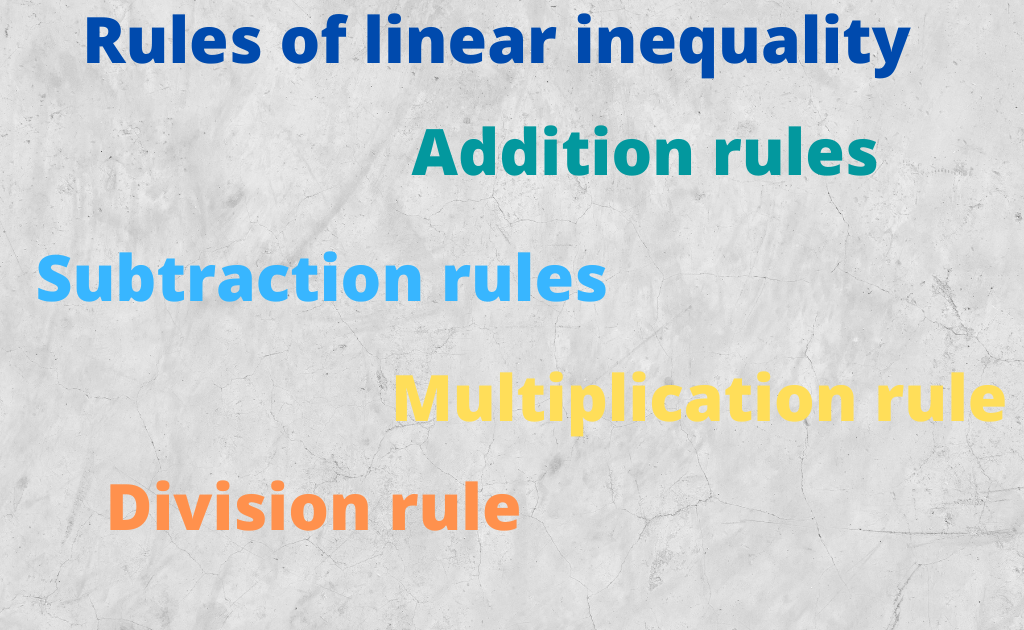Linear Inequality Mean in Math-
Many real-life problems involve linear inequality .here we shall consider that problem (relating, to trade, industry, and agriculture.
Linear inequalities are expressed where any two values are compared by the inequality of four symbols such as, ‘<’, ‘>’, ‘≤’ or ‘≥’. These values could be algebraic or numerical a combination of both.
For example, 7<12, 25>16 are examples of numerical inequalities, and x>y, y<19-x, x ≥ z > 11 are examples of algebraic inequalities (also called literal inequalities). In this article, our main goal is to learn what inequality in Math is, linear inequalities, graphing of linear inequalities, and examples in detail
What is linear inequality mean in math?
in Mathematics, inequality denoted the mathematical expression in which both sides are not equal. If the relationship makes a non-equal comparison between two numbers or two expressions, then it is known as inequality in Maths. Inequalities are expressed by the following five symbols In this case, the equal sign “=” in the expression is replaced by any of the inequality symbols such as less than symbol (<), greater than symbol (>), less than or equal to a symbol (≤) greater than or equal to a symbol (≥), or not equal to a symbol (≠). The distinct types of inequalities in Maths are polynomial inequality, rational inequality, and absolute value inequality.
The symbols ‘<‘ and ‘>’ express the strict inequalities and the symbols ‘≤’ and ‘≥’ represent the slack inequalities. A linear inequality seems exactly like a linear equation but there is a change in the symbol that relates the two expressions.
The five symbols that are used to denote the linear inequalities are listed below:
| Symbol name | symbol | example |
| Not equal | ≠ | x ≠ 6 |
| Less than | (<) | 2< 3 |
| Greater than | (>) | 15 > 12 |
| Less than or equal to | (≤) | y ≤ 5 |
| Greater than or equal to | (≥) | -3 – √3x ≥ 10 |
We need to note that If p≥q, then it means that p is some number that is either strictly greater than q or is exactly equal to q if, p>q, then p is some number that is strictly greater than q.. Likewise, the same applies to the remaining two inequalities > (less than) and ≥ (less than or equal to).
Now, Let’s say we have a linear inequality, 3x – 4 < 20. In this case LHS < RHS. We can see that the expression on the left-hand side, that is, 3x – 4 is in fact lesser than the number on the right-hand side, which is 20. We can denote this inequality pictorially on a weighing scale as:
For example:
- ax<b
- ax+b≥c
- ax+by >c
- ax+by≤c are inequalities.
inequalities
(i)AND (II) are in one variable. While inequalities (iii) and(iv) are in two variable inequalities.
Rules of linear inequalities The four types of operations that are done on linear inequalities are, subtraction, addition, , multiplication, and division. Linear inequalities with the same solution are called equivalent inequality.

 written by
written by 



Leave a Reply